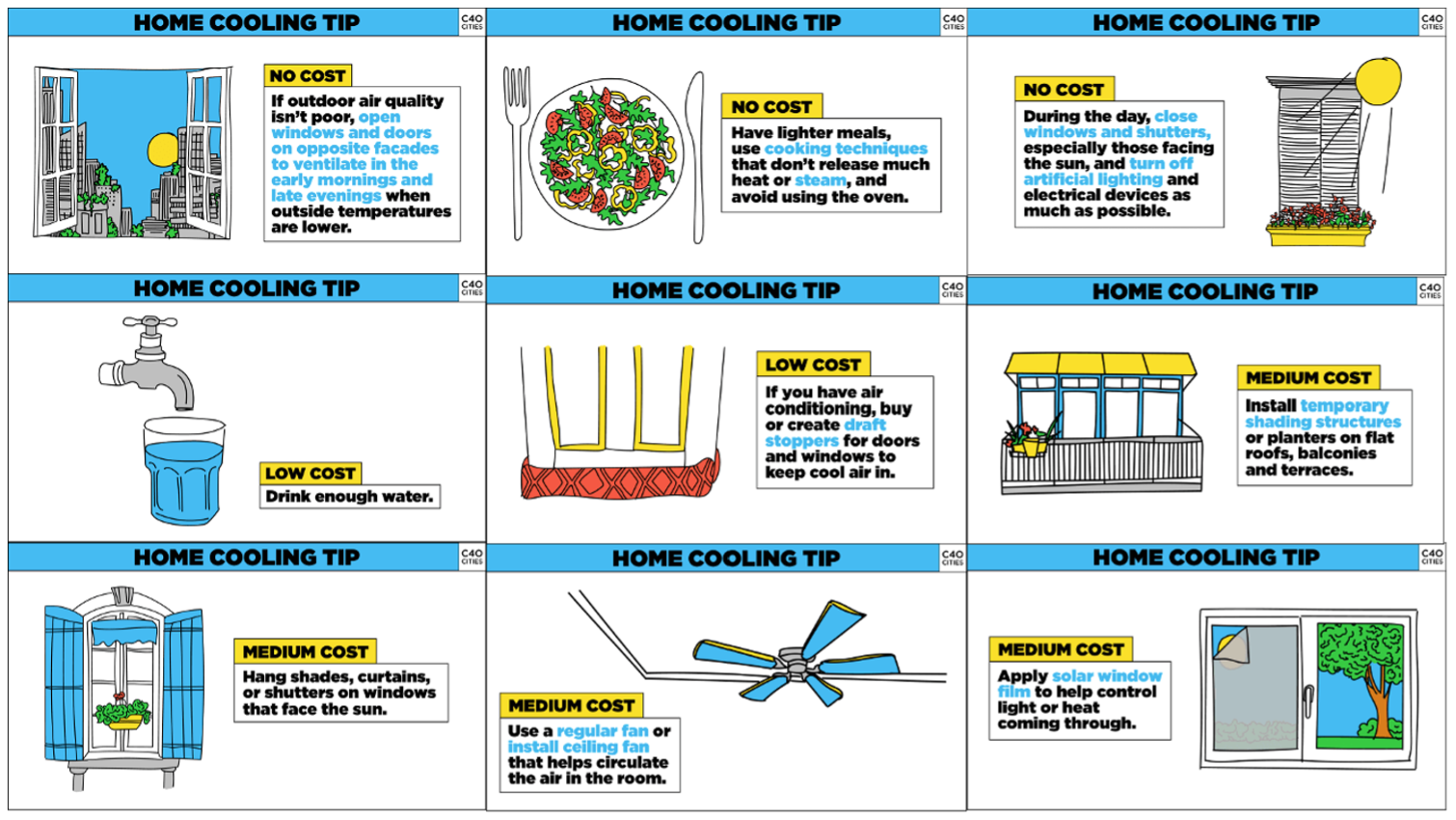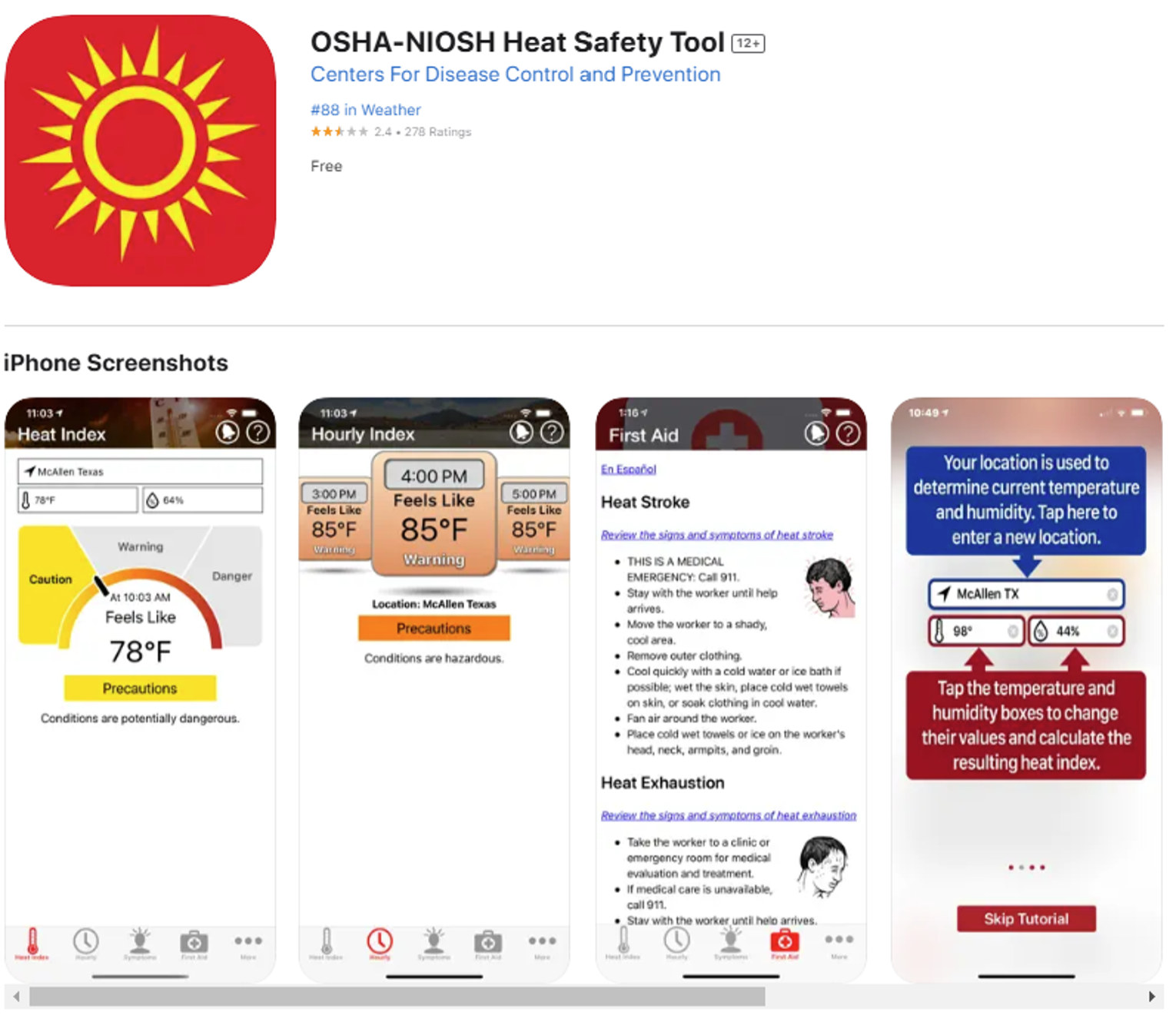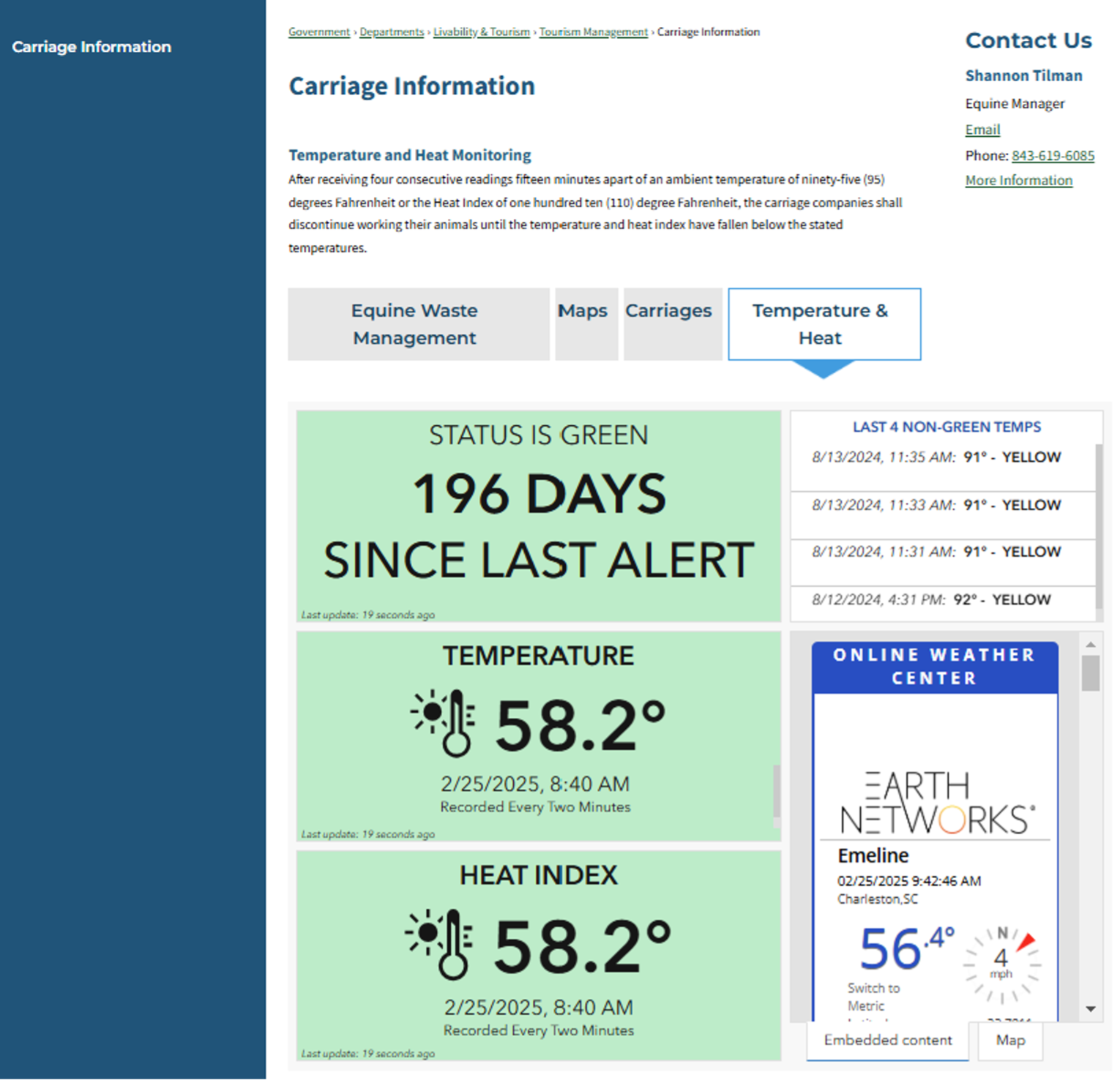Heat Preparedness
Lowcountry community members can prepare for our heat season using a three-prong approach: 1) planning before it becomes hot (pre-event phase): 2) managing during peak heat days (heat event phase), and 3) evaluating impacts and taking actions after a heat event (post-event phase).
- Pre-Event Phase – Ahead of our heat season, prepare your family and your home, plan how an extreme heat event might impact your work, and assemble resources that will help avoid extreme heat exposure.
- Event Phase – During an extreme heat event, stay tuned to NWS advisories and local weather reporting about heat peaks and duration, monitor your household and your work or workers’ exposures, and have backup plans in case of emergencies.
- Post-Event Phase – Following an extreme heat event, consider your household and work or worker effects and any adjustments to your own responses, including evaluating how your household fared and whether your family might require additional backup support in case of emergencies. Stay alert for delayed health problems since some consequences occur up to ten days after the peak heat.
Community Notifications
Pre-Event
Seek out National Weather Service and Local Meteorologists’ Communications
Throughout the heat season and particularly during national Heat Safety Campaigns, NWS Charleston will post heat safety and preparedness information on social media channels. When there is potential for an extreme heat event, it will be highlighted within the Hazardous Weather Outlook and included in briefings to core partners (such as emergency managers and media). For example, the City of Charleston uses #BeattheHeatCharleston to communicate about heat issues via social media and uses the City Newsletter to provide greater context and list available resources.
Event
Act on NWS and Local Meteorologists’ Communications
When confidence is high that the area will experience heat indices of 108°F-112°F, NWS Charleston will issue a Heat Advisory, typically 12-24 hours before the event. If heat indices are expected to reach 113°F or greater, an Extreme Heat Watch or Warning will be issued.
As an example, the City of Charleston’s Emergency Management (EM) team receives regular briefings from NWS Charleston. When an extreme heat event is flagged, the EM team alerts City leadership. The City’s Safety Officer issues heat safety protocols for city workers, particularly outdoor workers. The City also alerts residents to take necessary precautions through social media.
Post-Event
Consider whether you were ready for the heat event or whether you should prepare differently in the future.
Reflect on your household or workforce responses to the communications received. Are there lessons learned about community notifications that would encourage the same or different behaviors in future heat events?
Households
Pre-Event
Reduce Heat Gain – Prioritize reducing the amount of heat gain on your home (i.e. the amount of heat your house absorbs). In homes where residents don’t have control to make modifications, temporary solutions (e.g. window blinds or curtains) will help.
- Shading – Increasing shade (e.g. awnings, arbors, or trees/vegetation) and pervious surfaces (e.g. reducing paved driveways) can help to reduce heat gain. Also, using blinds or shades to reduce heat gain inside or adding plantings on porches/carports to reduce heat gain on the building can help (Figure 3).
- Insulating – Improving weatherization (e.g. weather stripping around existing windows and doors or installing insulated windows and doors, adding roof and/or wall insulation, and sealing air leaks) can help to maintain cooling inside the home. Adding temporary insulation (e.g. solar blankets, draft stoppers) also helps.
- Reflecting – Increasing the reflectance of roofs, walls or paved areas can help reduce heat gain. Choose light colored window coverings to reduce heat gain.
- Reducing Heat Generation – Review household patterns to determine ways to reduce use of lights, dryers and ovens during extreme heat events.

Provide Heat Relief – Devise ways to provide heat relief, even temporarily.
- Cooling – Designate a cool room ahead of a heat event and prioritize preparing that room for use during the event. If using ceiling fans, make sure to direct fans counterclockwise (downdraft) to improve cooling. Ideally air conditioning (central or window unit) would be available in the cool room. The cool room should not face west.
- Backup Power – Prepare for power outages during extreme heat events (e.g. using solar or backup generators).
- Identify alternatives well ahead of heat events – Understand the resources available in your community (e.g. utility bill support, HVAC repair services, cooling center locations, energy audits, and weatherization programs). Establish a backup plan or what-if scenario in case of power outages or HVAC outages. Determine the best option nearby (e.g. local library or community center), keeping in mind operating hours, and test out accessing and using that option. Establish a buddy system to help, or to get help from neighbors, especially if you are heat vulnerable (extremes of age or have major chronic illnesses).
- Swimming lessons – Make sure you and your family know how to be safe in the water. Community member use of swimming pools to cool off during heatwaves too often correlates with increases in drownings. [4] Pre-event efforts to increase swimming lessons could help to reduce the likelihood of such risks and offers additional benefits when flooding occurs. To learn more about available swimming lessons, see City of Charleston Swim Lessons.
Event
Reduce heat gain in your home.
- Shading – Keep blinds or shades closed to reduce heat gain inside the home.
- Insulating – Add temporary insulation (e.g. solar blankets, draft stoppers).
- Reducing Heat Generation – Reduce use of lights, dryers and ovens during extreme heat events. Prioritize cool foods and hydration.
Provide heat relief in your home.
- Optimize the use of AC in occupied spaces, closing doors and vents in those spaces that are not frequently used. Designate a cool room to reduce energy load further. Use higher thermostat settings (76°F) when at home and even higher (80°+) when away. If using ceiling fans, make sure to direct fans counterclockwise to improve cooling.
- An ice foot bath or arm bath can cool the core temperature. These and other ways to keep cool are found in Table 1:
| 1 | Stay in an air-conditioned room |
| 2 | Avoid strenuous activities |
| 3 | Wear light, loose clothing |
| 4 | Stay hydrated by drinking fluids |
| 5 | Monitor for heat symptoms like cramps, cessation of sweating, temperature > 103 |
| 6 | Never leave person or pet in a closed car |
| 7 | Check on others |
- If you can’t cool down at home, the City of Charleston identifies Cooling Facilities (libraries and community centers) where you can go temporarily. These facilities serve as ad hoc cooling centers for community members during periods of extreme heat. Note that these facilities do not currently offer overnight accommodation and operate only during regular business hours so check operating hours.
Post-Event
Consider what worked and what needs to change.
Evaluate how your household fared during the event. Were there areas that would have benefited from more shade, insulation, or reflective surfaces? Were there household patterns that unexpectedly generated more heat and/or more utility demand? Did localized cooling provide a comfortable place for the household? Was backup power required and if so, how did it perform?
Operations
Pre-Event
Prepare healthcare workers to respond to patients who have extreme heat exposure.
The healthcare workforce, including community health workers, is preparing for the increasing threat of extreme heat through innovative training and service activities. Addressing current community needs related to extreme heat provides the opportunity to simultaneously promote health and prepare healthcare workers to engage in heat-aware practice. The Medical University of South Carolina (MUSC) chapter of the South Carolina Public Health Preparedness Student Corps (SCPHPSC), for example, brought together medical students, entry-level nursing students, and graduate nursing students as part of a training program focused on disaster preparedness. Students received extracurricular training in equity-focused disaster response, including materials related to the impact of extreme heat on patient care and treatment. Several students developed and distributed health education materials related to extreme heat tailored to specific community groups as part of this learning experience. All MUSC students who completed this program joined the Medical Reserve Corps (MRC), which is a network of community members prepared to respond during public health emergencies including disasters such as extreme heat. Actively engaging diverse healthcare disciplines in meeting current community heat health needs can promote health and better prepare the healthcare workforce to respond to future heat emergencies.
Prepare outdoor workers to manage their own extreme heat exposure.
Federal protections continue to improve, including the Occupational Safety and Health Administration’s (OSHA) emergent standards on protection for outdoor workers. The proposed OSHA protections require employers to monitor heat risks, train employees on how to recognize heat-related illness, and communicate heat safety to employees. Employers are also obligated to implement regular water breaks, rest breaks, consider providing cooling personal protective equipment (like cooling vests), and implement a buddy system for workers to keep an eye on each other and communicate when they need help.[6] Also OSHA offers an easy to use app, the OSHA-NIOSH Heat Safety Tool, (available on Apple and Google) to help individuals understand heat in their area (Figure 4).
Engage hospitality workers to help communicate extreme heat risks to visitors.
Given the influx of tourists over the summer months, the hospitality industry in the region plays an important role in communicating heat risks to visitors. Drawing on feedback from the Charleston Tourism Bureau, helping visitors to understand Lowcountry heat and humidity could be integrated into tour operations. Indoor activities could be emphasized on particularly hot days. Staff at hotels and at other tourist destinations could be trained to understand heat stress and how to cope with visitors who may find themselves overly stressed due to their unfamiliarity with Lowcountry heat. Hotel rack cards could offer resources to cope with heat while encouraging cooler activities. Water bottle refill stations could be added to parks and other outdoor recreation areas to encourage hydration. Extreme heat is more dangerous to visitors not acclimated to heat like local citizens.

Event
Help healthcare workers advocate for ways to avoid extreme heat.
Stay indoors during the peak sunshine hours of the day. Community health advocates could encourage use of alternative locations (for planned outdoor activities) to reduce heat exposure. In the worst-case scenario, activities could be rescheduled when heat poses a risk.
Help outdoor workers adjust behaviors to reduce extreme heat exposure.
For those who have the option to adjust hours, working earlier in the morning to avoid peak heat during the day offers some recourse. For example, MUSC grounds workers begin work very early during the heat season and organize their time, to the extent possible, to work in shade throughout the remainder of their workday, which concludes earlier as well. MUSC outdoor workers also adjust their uniforms (opting for cooler clothing).
Encourage hospitality workers to offer options for cooler activities during extreme heat events.
Those who often serve as Lowcountry liaisons for our visitors could help those visitors by highlighting days when extreme heat is expected and offering suggestions for indoor or cooler area activities to help reduce heat exposure. Moreover, tour guides could be trained to help identify early signs of heat stress and protocols for how to respond when heat stress does occur. For example, the City of Charleston addresses heat in its information on a common tourist activity involving carriage horses (Figure 5).
Post-Event
Consider what worked and what needs to change during extreme heat.
Evaluate how the workforce fared as well. Were operations optimal given the context or should adjustments be made to prepare for future events? What are the next steps to address those outcomes?

To learn more:
- The Charleston Preservation Society provides Resilience Guidance, including suggestions for addressing extreme heat.
- NOAA developed a Heat Action Checklist for before and during heat events.
- The United States (U.S.) Department of Energy offers home modification tips to help with heat at home. Also, C40 offers Home Cooling Tips. The University of Waterloo describes Three steps to cost-effective home heat protection and Three steps to cost-effective apartment and condo heat protection. Other resources include 12 Ways to make your home more energy efficient from Save On Energy and 11 Easy Ways to Lower Cooling Costs from Richmond’s Air.
- OSHA offers guidance on worker safety. Some states, such as California, now have additional protection.
- The City of Boston provides suggestions for Heat Resilience Solutions.
- The Lowcountry Toolkit Glossary
- [3] C40 (April 26, 2025) Home Cooling Tips Messaging Toolkit. https://www.c40knowledgehub.org/s/article/Home-Cooling-Tips-messaging-toolkit?language=en_US.
- [4] Corwin, T. (2024) “With drownings on the rise, Summerville Y is looking to save lives with swim lessons” Post and Courier. June 10. https://www.postandcourier.com/health/drowning-sc-summerville-ymca/article_118a44d8-234c-11ef-89ea-ebdfc7e32801.html
- [5] US Department of Homeland Security (April 26, 2025) Extreme Heat. https://www.ready.gov/heat
- [6] OSHA (April 25, 2025) Heat Standards. https://www.osha.gov/heat-exposure/standards
- [7] OHSA (April 25, 2025) Heat Safety Tool. https://www.osha.gov/heat/heat-app
- [8] City of Charleston (April 25, 2025) Carriage Information. https://www.charleston-sc.gov/1499/Carriage-Information#:~:text=After%20receiving%20four%20consecutive%20readings,have%20fallen%20below%20the%20stated
